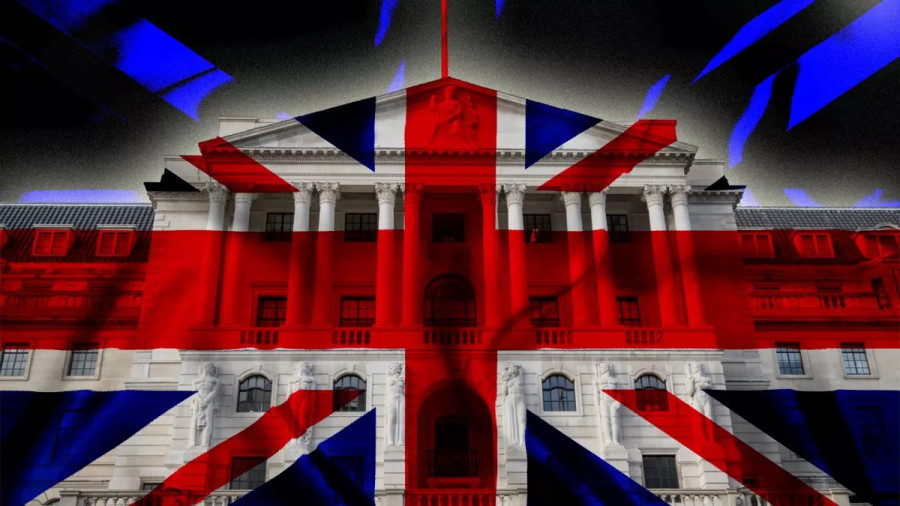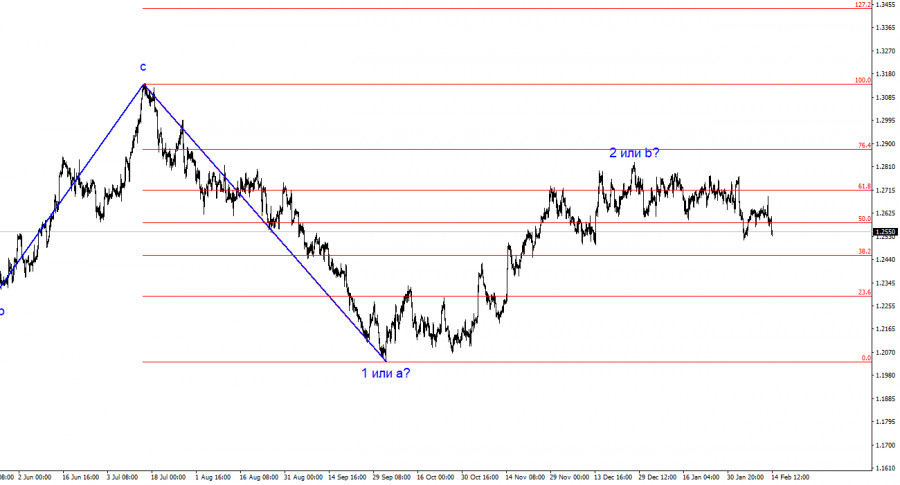
The British pound continues to fare much better than the British economy. Recall that problems with the economy in the United Kingdom started in 2016 when a majority of citizens voted for Brexit in the referendum. Since then, the UK (which remains one of the strongest in the world) has been experiencing economic turbulence. In the last one and a half years, the Bank of England has been forced to raise interest rates, further cooling economic growth. The fact that the UK economy has not yet slipped into recession is surprising and pleasing.
Bank of England Governor Andrew Bailey has repeatedly said that they will manage to avoid a recession, and the economy shows higher resilience against the backdrop of the central bank's tough policy. However, even if the economy manages to avoid a recession, it does not mean that it will quickly recover after the BoE starts reducing rates. It may take years to revive economic growth.

The International Monetary Fund also believes that the UK economy will continue to face problems in 2024. The IMF forecasts UK GDP to grow by 0.6% in 2024, which is lower than the previous forecast of 1%. The growth of the British economy will be even less than that of Germany or France. The IMF believes that weak economic growth will be due to a more extended period during which the BoE will be forced to keep rates at peak levels because inflation still shows high rates.
In my opinion, the dismal state of the British economy should exert pressure on the British pound. To "close" the bearish segment of the trend, the pound should fall to the 1.20 level. After that, at any moment, the downtrend can be recognized as completed (it will turn out to be a three-wave trend), and after that, the market can start building a more attractive bullish segment. Therefore, I don't need the pound to fall constantly or, for instance, throughout the year. However, without falling to the 1.20 level or below, there's a chance that the wave analysis may appear hopelessly confusing. I would like to remind you that we are interested in wave structures that are simple and understandable, ones that can be worked with, not structures created on charts for the sake of appearance or to demonstrate the depth of knowledge in wave analysis
Based on the analysis, I conclude that a bearish wave pattern is being formed. Wave 2 or b appears to be complete, so in the near future, I expect an impulsive descending wave 3 or c to form with a significant decline in the instrument. The failed attempt to break through the 1.1125 level, which corresponds to the 23.6% Fibonacci, suggests that the market is prepared to sell a month ago. I am currently considering short positions with targets around the level of 1.0462, which corresponds to 127.2% according to Fibonacci.

The wave pattern for the GBP/USD pair suggests a decline. At this time, I am considering selling the instrument with targets below the 1.2039 mark because wave 2 or b will eventually end, just like the sideways trend. I would wait for a successful attempt to break through the 1.2627 level as this will serve as a sell signal. Another signal was formed on Tuesday, in the form of an unsuccessful attempt to break this level from below. Now I am quite confident about the instrument's decline, at least to the 1.2468 level, which would already be a significant achievement for the dollar, as the demand for it remains very low.
The material has been provided by InstaForex Company - www.instaforex.comfrom Forex analysis review https://ift.tt/iYju1tb
via IFTTT
